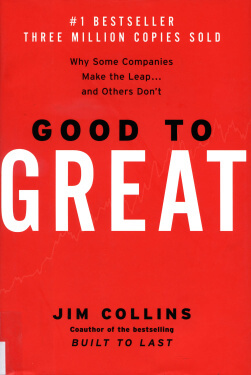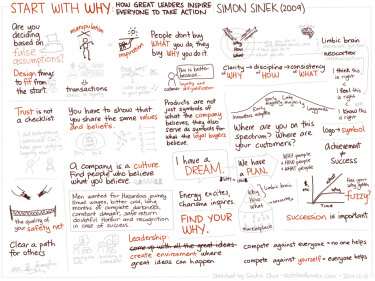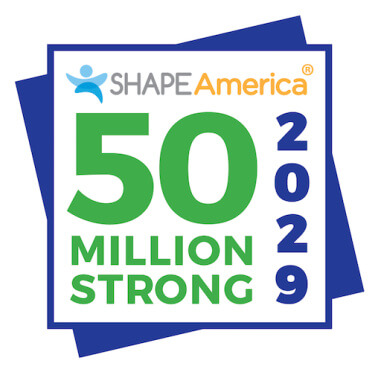At Slippery Rock University (SRU) PA, we’re working towards achieving SHAPE America’s 50 Million Strong by 2029 commitment through our new School Wellness Education program (that includes teaching certification in health and physical education). We began this program redesign by thinking about our purpose and asking ourselves the question, “Why?”

Why SRU Created Something New
In 2011, the job market for physical and health education teachers was bleak even though health data showed that schoolchildren were more likely than ever before to be inactive, overweight, and unhealthy. At SRU and across the country, enrollment in health and physical education teacher preparation programs was declining. Simultaneously, college-bound health and wellness enthusiasts flocked toward careers in Exercise Science, Public Health, and related wellness professions.
Recognizing this changing career landscape and its programmatic impact, SRU’s department chair felt inspired to act. Experts both from within the fields of physical and health education and innovative thinkers outside of the field were asked to identify what the university could do to improve its teacher education program, and perhaps more importantly to identify what SRU could do to help those outside of our profession see the value in supporting quality public school health and physical education.

Good to Great
The redesign process started by reading the book Good to Great by Jim Collins (2001). This book, with its focus on identifying the characteristics of “great” (highly successful) businesses, had been recommended by someone outside of the field of physical and health education.
A main concept from Collins’ book is that in order to be great as an organization (or profession) you must consider the following: 1) What are you passionate about? 2) What do you or your organization have the ability to be the best in the world at?, and finally, 3) What is your economic engine? (i.e. what does society need?). Collins further suggests that why you exist as an organization and the products or services you deliver should come from the intersection of your answers to these three questions.
Over the course of several faculty meetings, the PHE faculty at Slippery Rock University determined:
- We are passionate about improving the health and well-being of students through physical activity and quality health and physical education
- We have the ability to prepare top-notch teachers in this field, and
- Society needs us to improve public health (i.e. improve health biometric factors [blood pressure, cholesterol, etc.], and reduce healthcare costs through increased physical activity)
Start with Why
After reading the book Start with Why by Simon Sinek (2009), it became clear to SRU faculty that we needed to look less at what we do and how we do it, and more importantly at WHY. In seeking to answer the “why” question we asked ourselves:
- Why do we teach health and physical education in schools?
- Why should schools value what we do?
Consistent with what society needs, we decided our WHY for physical education is to improve public health by inspiring youth to build healthy behaviors that last a lifetime. At the time of these discussions (2011-2016 – yes, we had a lot of discussions before taking the plunge!), our teacher education curriculum was very traditional. It included, but was not limited to; health and PE content courses, methods courses, pedagogy in team sports, courses relating to motor skills and motor development, and assessment.

Health courses were taught in a traditional classroom setting and physical education courses were taught in a physical activity setting. After several PHE faculty meetings, we decided that our WHY – our reason for being – did not match what we were actually delivering through our curriculum. As a direct result of these discussions, SRU faculty decided to take a leap of faith and create something entirely new. The experience has transformed our department.
School Wellness Education (SWE)
About the same time as we stared rethinking our program, the Centers for Disease Control and Prevention (CDC) and ASCD launched the Whole School, Whole Community, Whole Child Approach (WSCC), a model founded on the belief that health and well-being are vital to the mission of public education. WSCC views the entire school and community as key players in promoting physical activity and healthy behaviors among youth (not just the physical and health education teacher).
Based on the CDC’s update, as a department, SRU faculty agreed to create a curriculum that would prepare physical and health education teachers to also serve as school wellness educators. This includes being a champion for school-to-community wellness and using the Whole Child Model to create a culture of wellness within schools that transcends to all layers of the communities in which students live, work, and play. SRU’s School Wellness Education (SWE) curriculum was based on the WSCC model and focuses on movement and wellness to prevent chronic disease. The SRU faculty believes that physical activity (and effective physical education) is a vehicle for improving health outcomes, and that this message should be delivered consistently throughout the entire SWE curriculum.
When creating the new SWE curriculum, we began by identifying five pillars. The five pillars include:
- Teaching Excellence
- Physical Health and Wellness
- Social and Emotional Wellness
- School to Community Health
- Professionalism, Advocacy, and Leadership.
These five pillars were identified based on what we felt future teachers needed in order to create a culture of wellness in schools. In order to more effectively achieve our WHY through our SWE curriculum, we created eight entirely new courses, revised six existing courses, and kept six courses unchanged.
Comprehensive School Physical Activity Programs (CSPAPs) and SHAPE America’s 50 million Strong commitment (empowering all children to be healthy and active) were additional driving factors for this new curriculum. We realized that our existing SRU curriculum did not effectively cover how to coordinate and implement physical activity programs outside of physical education classes, and was not specifically focused on improving schoolchildren’s health outcomes.

Combined Vision with SHAPE America
Another unique aspect of the new curriculum is that health and physical education are not viewed dichotomously. We’re training teacher candidates to teach and reinforce concepts of healthy living through physical education and physical activity. This integration is called “Living Well” and teacher candidates are trained to implement seven components of Living Well through K-12 physical education.
Living Well components are aligned with SHAPE America National Standards and include: 1) Physical Activity and Movement, 2) Fueling your body through Nutrition, 3) Social and emotional wellness, 4) The human body, 5) The human body response, 6) Health-related fitness, and 7) Injury prevention.
The Living Well integration does not detract from health education. Instead, it is designed to provide a clear purpose for physical activity including how physical activity benefits one’s health through disease prevention and improving the quality and longevity of life. National Health Education Standards, including content on sexual health, nutrition, alcohol, tobacco, and other drugs, etc., will still be met through traditional health education courses. The Living Well components were created so that every day when public school students leave physical education classes, they have a clear “take away” message that will help empower them to lead healthy and active lives.
We believe SRU’s new SWE curriculum is consistent with helping physical and health educators to achieve 50 million Strong by 2029. In conjunction with preparing teachers to teach quality health and physical education, we plan to create School Wellness Educators who see themselves as the facilitators in creating a culture of health and wellness in schools. We’re working towards this goal by implementing our new curriculum, advocating that physical and health education teachers’ see their students’ health and well-being as their WHY, and collaborating with local k-12 schools to create a culture of wellness that models several aspects of WSCC and CSPAP.
So now that you’ve heard about the changes we’ve made to professional preparation, we’re interested in how you think higher education and teacher preparation programs can better prepare physical and health education teachers to create a culture of wellness in schools? What is higher education’s role in ensuring that we achieve SHAPE America’s #50millionstrong by 2029 commitment?
Please share your ideas with us and others in the discussion section below or on Twitter @SchoolWellEdu. We also invite you to read about how health and physical education professionals can rebuild the health and wellness of American society through schools at http://www.schoolwellnessedu.com/
To learn more about how Slippery Rock University is pioneering school wellness through our new SWE curriculum, contact Randy Nichols at randall.nichols@sru.edu , Hannah Brewer at Hannah.brewer@sru.edu , Jo Leight at Joane.Leight@sru.edu , Gary Clark at Gary.Clark@sru.edu , Ethan Hull at Ethan.Hull@sru.edu or Wei Bian at Wei.Bian@sru.edu.

I’d love
More info
Slippery Rock PETE,
Thank you for being willing to take risks as you revamped your program, as well as taking the time to share it with us all. I love the quote a “unique aspect of the new curriculum is that health and physical education are not viewed dichotomously” With this new view, of the outcome of school based wellness programs on lifelong learning of a healthy and active lifestyle the two become married once again.
One question I have is, in this new (Coordinated School Health, Whole School, Whole Community, and CSPAP)approach to our roles in school where do you propose the hands and feet, Health and Physical Educators, on the ground find the time to incorporate their role as School Wellness Champions?
Thank you again and I look forward to the discussion
The CATCH program is a great tool for methods courses for physical education and health teachers to be.
This email is to introduce the CATCH program highlighting some components and benefits. Please visit http://www.CATCHinfo.org for Free Sample Digital Lessons!
CATCH (Coordinated Approach to Child Health) is an evidence based wellness program proven effective for over 25 years in preventing childhood obesity. The target ages are from age 3 through 8th grade in any setting where there are groups of children. In-school, before and after schools programs, recreation sites such as camps, YMCA’s, Boys and Girls Clubs, Parks and Recreation sites, early childhood facilities, basically anywhere there are children there should be some component of the CATCH program.
The basic components are non-elimination games and activities that provide children many opportunities to practice and participate to improve their skills while increasing their moderate to vigorous physical activity level, nutrition lessons focusing on the “Go, Slow and Whoa” foods in an easy to implement format and a family component so everyone is on the same page, often the students teach the parents. Additionally there are separate units about Diabetes and also Food Service information.
CATCH has been proven, in an independent study out of Cornell University, to be the most cost effective program providing the biggest bang for the buck to prevent childhood obesity.
There is a great deal of historical data available plus free evaluation tools, grant information, UTube videos, webinars and much more located on the website: http://www.CATCHinfo.org, as well as the Free Sample Digital Lessons!
There are many implementation models available plus we offer training either in person or online. I would appreciate an opportunity to discuss the CATCH program with you and how it may fit into your schools and community. Please advise of a good time to reach out.
I applaud what you are doing with this program. Teaching to the whole student in the context of their whole life is so important! I take the same approach with my college students in their activity classes. I have found that in many cases it is transformational to their health lives going into the future.
PE is a great profession. If I were a PETE instructor, I would make connections with local high school PE teachers and ask to go observe their programs and eventually ask to present to the students the benefits of becoming a PE teacher. You could make a short presentation/talk about the SRU PETE Program. We need to actively recruit and educate future PE teachers. At my school we talk to our kids about our jobs and we have a PE Hall of Fame- for students who are now PE teachers! It is working. We have about 3-4 who are in PETE programs now.
5 Things to recruit/promote more PETE students:
1. Start a PE Teacher Hall of Fame at your school.
2. Tweet out pics of high school or PETE students having fun in activity
3. Use social media to tell students “your WHY”…Why am I a PE Teacher?
4. High School PE teachers begin a “Future PE Teachers of America Club” at your school.
5. PETE instructors visit local highs schools and promote your PETE Program. Make flyers to give to students.